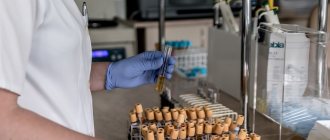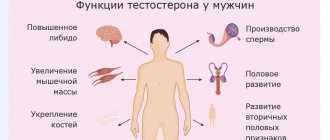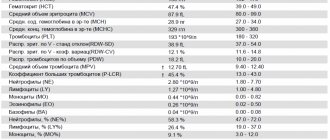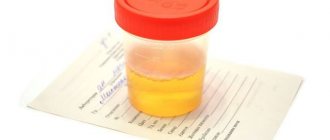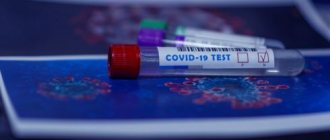Why is a leukocyte blood formula needed?
The leukocyte formula is the percentage of leukocytes in the blood serum (eosinophils, neutrophils, lymphocytes, basophils, monocytes).
This analysis allows you to determine the current state of the immune system, identify inflammatory processes in the patient’s body and determine the etiology of allergies. It is known that leukocytes protect the human body from dangerous microorganisms. One of the main tasks of leukocytes is the destruction of foreign particles. If an inflammatory process occurs in the patient’s body, it is immediately reflected in the leukocyte count.
Complete blood count (CBC/Diff - 5 fractions of leukocytes) - capillary blood in Moscow from day 1
from 290 ₽
Sign up
Clinical blood test (CBC/Diff - 5 leukocyte fractions) + ESR in Moscow from day 1
from 294 ₽
Sign up
Complete blood count (CBC/Diff - 5 fractions of leukocytes) in Moscow from 1 weekday
from 290 ₽
Sign up
When leukocyte counts change in the blood, it is necessary to determine in which direction the deviation occurs. This study will help you quickly find the problem and make a diagnosis. However, it should be taken into account that changes in blood parameters without in-depth diagnostics are not a characteristic and final sign for making a diagnosis.
How to reduce the number of basophils
As we said above, basophilia is not an independent disease, but can only be considered as a marker of a pathological process, indicating certain changes in the body, so it is not worth fighting this symptom. However, this sign cannot be ignored and additional examination is necessary to identify the causes that led to this condition and act on them.
If the cause of basophilia was anemia, iron supplements, vitamins B12 and folic acid are prescribed. Antihistamines are used to treat allergies. If physiological basophilia occurs, correction is usually not required.
After a correct diagnosis and adequate therapy, when the cause of the pathological process is eliminated, the blood test returns to normal.
Return to articles
When is the test prescribed?
A clinical blood test with a leukocyte formula is indicated for patients with various pathologies. It allows you to assess a person’s health status with a comprehensive and timely diagnosis of diseases, including those occurring in a latent form.
Indications for a clinical blood test with a leukocyte formula are:
- medical examination or routine medical examination;
- preparation for surgical treatment;
- infection or suspected infection;
- suspicion of inflammation or parasitic infestation in the patient’s body;
- allergic reactions;
- prescribing certain medications;
- monitoring the effectiveness of treatment.
Before donating capillary blood, it is recommended not to drink alcohol during the day, not to eat for 2-3 hours, not to smoke for 30 minutes and to avoid stress and excessive physical activity.
Physiological reasons
The level of basophils increases with increasing concentrations of the female sex hormone called estrogen. This is possible both during normal processes for a healthy body, and with the supply of hormones from the outside. The following are likely conditions for elevated readings.
- Period of menstruation. It is better to take a general blood test during a period of calm hormonal levels: a few days after menstruation or 7-10 days before their onset.
- Pregnancy. A slight increase in the number of basophils occurs due to the body’s wary attitude towards the fetus developing inside. In the first trimester, basophils can almost disappear from the blood due to an increase in its volume. An increase is observed at later stages.
- Long-term use of hormonal contraceptives.
Less often, a rare profession affects the composition of the blood. Chronic exposure of radiologists to low doses of radiation slightly increases the number of basophils. The simpler reason is the recovery period after infections and serious illnesses, during which maximum functionality and accelerated replenishment of the ranks of defenders were required from all leukocytes.
What are leukocytes?
Leukocytes are cells that are found in very large quantities in the blood and in almost all tissues. Their main function is protective and immune. However, they would not be able to fully perform these functions if they were not divided into several varieties within their group, each of which plays its own special role.
There are five main types of leukocytes in the blood. They are determined in tests in the form of a leukocyte formula, so the level of leukocytes in the blood is assessed not only as a whole. The content of these cells is also always calculated. These include:
- neutrophils;
- lymphocytes;
- monocytes;
- eosinophils;
- basophils.
They have different functions, but they work together, influence each other, transmit information between themselves and more. High or low white blood cells belonging to a certain type in the blood indicate various diseases, so determining their number is very important in medical practice.
Normal for pregnant women
| Trimester | White blood cell count (*109) |
| first | 4–9 |
| second | 4–10 |
| third | 14–12 |
Normal for women
| Age | White blood cell count (*109) |
| up to 16 years old | 4,5–12,5 |
| up to 20 years | 4,2–10,5 |
| from 21 years old | 4–9,0 |
Normal for men
| Man's age | White blood cell count (*109) |
| 12–18 years old | 3,5–8 |
| 18–25 years old | 4–9 |
| 25–40 years | 4–8 |
| Over 40 years old | 3–9 |
Normal in children
| Age | White blood cell count (*109) |
| newborn | 10–30 |
| from the fifth day of life | 9–15 |
| from the tenth day of life to one month | 8,5–14 |
| from month to year | 8–12 |
| from one to five years | 7–11 |
| from 5 to 15 years | 6–10 |
| over 15 years old | 5–9 |
Functions of basophils
Basophils take an active part in immune reactions, in particular in the reaction of inflammation, allergy or anaphylaxis. When an allergen, toxin or antigen is detected, the basophil releases from its granules all biologically active substances that block the action of substances dangerous to the body and, in parallel, trigger a whole cascade of inflammatory reactions aimed at improving access of other immune cells to the pathological focus.
Thus, basophils, firstly, neutralize the spread of toxins throughout the body, and secondly, create conditions for the work of other immunocompetent cells (for example, lymphocytes).
Leukocyte formula:
| Index | × 10x9/l | ratio, % | |
| Neutrophils | segmented | 2,1–5,4 | 43–71 |
| stab | 0,4–0,3 | 1–5 | |
| Basophils | up to 0.063 | up to 1 | |
| Eosinophils | 0,02–0,3 | 0,5–5 | |
| Lymphocytes | 1,1–3,1 | 17–38 | |
| Monocytes | 0,08–0,5 | 3–12 | |
The need for additional examination
Despite their small numbers, basophils occupy an important place among leukocytes and are usually rapidly created by the body for a timely response to danger. By collapsing, these cells attract the attention of useful allies and at the same time create better conditions for blocking harmful agents, preventing them from capturing new areas. An increase in basophil levels may indicate a routine fight against an infection or parasite, as well as an allergy. In women, this indicator varies depending on the phase of the cycle and reflects the use of hormonal drugs.
Unfortunately, sometimes elevated basophil values indicate serious inflammation in autoimmune diseases, hemolytic anemia, liver damage, or insufficient synthesis of thyroid hormones. The most serious case is leukemia, in which blood cells are created in excessive numbers and the level of basophils can rise to 20%. Any serious disease cannot be diagnosed by one blood test result, or even by one type of test in principle. To avoid mistakes, the doctor is obliged to interview the patient and prescribe a whole range of suitable studies. Until these results are obtained, it is too early to draw conclusions.
Neutrophils
Neutrophils come from red bone marrow, they are formed from a single stem cell, which is the ancestor of all blood cells. However, stem cells do not immediately turn into neutrophils. Between these two forms there are several stages, several intermediate forms.
There are 6 types of neutrophils:
- myeloblasts;
- promyelocytes;
- myelocytes;
- metamyelocytes;
- band neutrophils;
- segmented neutrophils.
Most of all is in the blood of the latter. They are present in an amount of 40–75% of the total number of leukocytes. The number of rod-shaped neutrophils is significantly smaller, they can be 1–6%. The number of young cells does not reach 1%.
Basophils in the classification of leukocytes
Leukocytes are granular and non-granular. Non-granular cells include cells with a solid nucleus and no inclusions in the cytoplasm, while the other group, in addition to inclusions, has segmentation of the nucleus. The classification is clearly shown below.
1. Granular leukocytes (granulocytes):
- Neutrophils are the main type of leukocytes. Their task is to capture bacteria during the process of phagocytosis and destroy them using enzymes and other protein substances of the granules.
- Eosinophils are involved in the production of antibodies and the development of an allergic reaction. They can only absorb small pathogens.
- Basophils form an allergic response.
2. Non-granular leukocytes (agranulocytes):
- Lymphocytes produce antibodies, destroy pathogens and regulate the activity of other cells. B-lymphocytes create antibodies to foreign structures, different groups of T-lymphocytes regulate immunity and antibody synthesis in different ways, and NK-lymphocytes destroy cells that differ from normal ones in one way or another.
- Monocytes are large cells that can capture large pathogens without dying.
Granular leukocytes are named according to their ability to absorb a particular dye when examined under a microscope. Basophils, for example, stain only with a basic dye, while eosinophil structures can only change color with acidic eosin. There are fewer basophils in the blood than other leukocytes.
Monocytes
Monocytes are cells of the immune system that are among the first to respond to the penetration of aggressors into the body. If the forces of local immunity could not contain the attack of bacteria, fungi or viruses, then it is monocytes that are the first to rush to protect health.
Monocytes are formed in the red bone marrow and released into the blood. There they begin to actively function, but this does not last long, only 2-3 days. Then, using their ability to move, they move beyond the vessels through special small pores between the cells and penetrate into the tissue. There, monocytes slightly change their structure and turn into macrophages - more effective phagocytes.
Possible violations
Knowledge of the role of basophils suggests that most of them are found in the blood when the body needs a protective reaction. This may be due to foreign substances, poisons, invasion of the body by bacteria, severe inflammation or even tumors. To make an accurate diagnosis, doctors not only look at the number of basophils, but also evaluate the content of other cells in the blood.
| Cause | Change in the number of basophils | Other changes in the blood | Possible additional tests |
| Allergy | 1-2% (change less than half) | Moderate increase in the number of leukocytes, a sharp increase in eosinophils, high levels of immunoglobulin E | Immunogram, collection of information about intolerance, skin test, allergy chip |
| Autoimmune diseases | Individually, growth indicates the acute phase of the disease | Increased ESR, possible leukocytosis | Blood for rheumatoid tests (rheumatoid factor, antibodies to streptococcus, C-reactive protein, plasma protein level), urine test |
| Nonspecific ulcerative colitis | Individually | Decrease in the number of red blood cells and hemoglobin, possible leukocytosis, increase in ESR, platelet count | Immunological blood test, biochemical analysis, feces for occult blood, coprogram |
| Myxidema | Low hemoglobin, many lymphocytes and eosinophils, low levels of thyroid-stimulating hormones | Blood for hormones T4, T3 TSH, ultrasound and scintigraphy of the thyroid gland | |
| Chronic hemolytic anemia | Low red blood cells, hemoglobin | Blood tests for bilirubin, stool and urine tests, bone marrow biopsy | |
| Acute infectious liver diseases | Increase in bilirubin, triglycerides, possible decrease or increase in leukocytes, decrease in hemoglobin, thrombocytopenia, increase in ESR | Analysis for immunoglobulins, bilirubin, liver enzymes, triglycerides | |
| Helminthiasis | Individually, growth only in the acute period | Eosinophilia, antigens to parasitic worms | Linked immunosorbent assay |
| Chronic myeloid leukemia | Up to 5-20% | Many granulocytes with a predominance of young forms, anemia is possible | Bone marrow puncture, PCR analysis, fluorescent hybridization, cytogenetic study |
| Mast cell leukemia | Neutrophil growth | Skin biopsy, histamine in urine, abdominal ultrasound, x-ray | |
| Polycythemia vera | Erythrocytosis, leukocytosis, thrombocytosis | Trephine biopsy, liver function tests, general urinalysis |
It is important to understand that minor fluctuations in basophils are quite normal, as is a single test result that, according to indications, falls outside the norm. The greatest accuracy is achieved by repeating the procedure three times every 2-3 days. It is best to donate blood in the same laboratory, so as not to increase the error from different instruments.
Basophilia in allergies
An allergic response is caused by a person encountering a substance that has already been recognized by his body as dangerous. The cause could be anything: from pollen and dust to a component of some rare material. Some reactions develop instantly, others are delayed; At first, basophils rush en masse to the source of the threat and are destroyed: this means that there are fewer of them in the blood. In the following days, the analysis may show basophilocytosis due to increased production of new cells.
A search for immunoglobulin E in the blood helps to reliably confirm an allergy: its value should be increased.
With chronic allergies, basophilia cannot be avoided either. Bronchial asthma or atopic dermatitis becomes a reason to expect results in the patient with an increased number of this type of granulocytes. Medicines can unexpectedly cause intolerance, and severe alcohol poisoning on the eve of blood testing can also adversely affect the result.
Autoimmune diseases
Since basophils carry substances for the development and intensification of inflammation, an increase in the number of such cells may indicate an acute manifestation of such a process. It is especially pronounced during exacerbation of autoimmune diseases, when the defense system is directed against its own cells. During remission, basophil levels usually return to normal. The following often causes basophilia:
- rheumatoid arthritis - joint damage and inflammation of internal organs;
- systemic lupus erythematosus - a massive attack by antibodies of connective tissue and small vessels;
- rheumatic carditis - damage to the heart;
- nonspecific ulcerative colitis.
A high erythrocyte sedimentation rate (ESR) will confirm an autoimmune disease, but to be sure, you need to donate blood for rheumatic tests to assess the severity of the disease. Nonspecific ulcerative colitis occupies a special place among serious inflammatory processes. The destruction of the intestinal walls in this disease prevents nutrients from being absorbed effectively and leads to anemia. If an infection joins the process, a blood test will show an increase in the number of all leukocytes. As the extent of the lesion increases, the number of platelets in the patient’s blood also increases.
Other causes of basophilia
The doctor's attention may be drawn to other cases, many of which are associated with inflammation or changes in blood composition. The simplest option in this case is a bacterial or viral infection that has not been noticed by the woman, but is active. Other options turn out to be more serious.
- Acute infectious liver lesions. The deterioration of the organ’s functioning in one way or another affects the components of the blood. For example, chronic hepatitis C causes a relative increase in the content of lymphocytes and monocytes, which the virus considers as a target. Problems in the liver lead to accelerated death of red blood cells and rapid destruction of platelets.
- Hemolytic anemia is a rare disease leading to loss of red blood cells. At the same time, the blood is saturated with the products of their breakdown, and the production of new cells is enhanced.
- Myxidema is a decrease in the synthesis of thyroid hormones.
- Helminthiasis is an infection with parasitic worms. Basophils attract eosinophils to the invaders, but overall levels are mildly elevated and quickly return to normal.
The first conclusions about the diagnosis can be made from a general blood test, but for clarification, the doctor may prescribe a whole range of studies. Basophilocytosis in such diseases is not very pronounced. If the process is sluggish, it will not be possible to detect it by the level of the fewest leukocytes.
Malignant lesions of the circulatory system
If the level of basophils exceeds 4-5%, we can talk about the most severe and dangerous diseases of the hematopoietic organs. They lead to tumor degeneration of the progenitor cell in the bone marrow, as a result of which basophils are formed in excess. Examples could include several conditions at once.
- Chronic myeloid leukemia is characterized by damage to the granulocytic lineage. It is caused by a chromosomal mutation and includes a long chronic phase during which symptoms are almost insignificant.
- Mast cell leukemia occurs with a massive proliferation of mast cells that affect the skin or internal organs.
- Polycythemia vera is an acceleration of the creation of all blood cells, especially red blood cells.
In all these cases, basophils are produced not in response to an invasion, but as a result of improper functioning of the hematopoietic organs. In turn, this work is disrupted by a mutation, and additional tests are aimed at identifying signs of it. An uncontrolled increase in hematopoiesis affects all organ systems at once, which necessitates the need for prompt treatment. Sometimes other cancers also lead to basophilia: for example, lung damage.
Eosinophils
Eosinophils are a small number of white blood cells that are found in human blood and tissues. They are an indispensable element that provides immunity.
Like other white blood cells, they are formed from bone marrow, and their progenitor is a single stem cell. The norm is 1–4%.
In total, eosinophils live about 12 days, but do not spend all of this time in the bloodstream. After 3-4 days of ripening, they enter the bloodstream and remain there for only 6-12 hours. Then they pass into the tissues and accumulate in especially large quantities in the lungs, under the mucous membrane of the digestive tract, and in the skin.
When the number of eosinophils increases, the condition is called eosinophilia, and the reverse change is called eosinopenia. As a rule, bright changes are symptoms of diseases, but some physiological fluctuations in their number are possible within normal limits. For example, an increase and decrease in eosinophils can be observed depending on the time of day; at night they are usually most in the blood.
Normal indicators
The blood test form contains two indicators: relative, which shows the proportion of cells in the total number of leukocytes (BA%) and absolute, showing the number of basophils (BA#).
Each laboratory indicates its own normal ranges on the form, since indicators differ among clinics due to the specific equipment used for laboratory tests.
The number of basophils does not depend on gender, age, or time of day. Normally, the relative indicator is: 0-1%, absolute: 0-0.09*109/l. The absolute value gives a more complete picture of health. Sometimes it may be necessary to manually determine cell counts under a microscope.
The interpretation of the tests is carried out by the doctor as a whole, so based on only one indicator it is impossible to establish an accurate diagnosis.
Leukocyte blood count: interpretation of results
Increasing performance
An increase in neutrophils in the blood occurs during infectious diseases and during some specific patient conditions. For example, in acute infectious diseases, candidiasis, rheumatism, tumor processes, lead or mercury poisoning, during diabetes. Also, an increase in the number of neutrophils can be influenced by conditions not associated with diseases, for example: severe physical exertion, stressful situations, overheating or hypothermia.
An increase in the number of lymphocytes indicates the presence of an infectious disease, blood pathology, lead or arsenic poisoning. Some medications can affect the increase in lymphocytes.
A previous infectious disease affects the increase in monocytes. Monocytes increase in autoimmune diseases, in the presence of cancer, and during carbon and phosphorus poisoning.
An increase in eosinophils occurs in response to allergic reactions, when taking certain antibiotics, medications for tuberculosis and convulsive conditions. Parasitic infections, diseases of the skin and respiratory system, and the acute course of an infectious disease can also change the indicators.
Basophils in the blood increase during influenza, chickenpox, tuberculosis, allergic reactions, ulcerative colitis due to increased sensitivity to any food, and an increase may also indicate the presence of cancerous tumors in the body.
Decrease in indicators
If the number of neutrophils decreases, the doctor may suspect that the patient has an infectious disease, hypersensitivity to drugs, anemia and anaphylactic shock.
Lymphocytes decrease in conditions of immunodeficiency, acute inflammatory processes in the body, renal failure and systemic lupus erythematosus.
A decrease in monocytes occurs during oncohematological diseases, purulent infections and aplastic anemia, the use of certain drugs and in a state of severe shock.
The decrease in eosinophils is affected by severe purulent infection and heavy metal poisoning.
Pregnancy, severe stress and the period of ovulation can be a natural cause of a decrease in basophils. Pathological causes include infectious diseases and Cushing's syndrome.
Why basophils may be elevated
Basophilia is diagnosed when the number of cells exceeds 0.2*109 /l. The use of drugs with estrogen hormones, as well as the use of thyreostatic drugs, can distort the picture. An increase in the rate is observed at the beginning of the menstrual cycle in women.
Basophils are increased:
- for chronic diseases of the gastrointestinal tract: inflammation of the gastric mucosa, enterocolitis, ulcerative inflammation of the large intestine, ulcerative lesions of the stomach and duodenum;
- at the stage of weakening of acute symptoms of an infectious disease;
- for blood diseases: acute form of leukemia, chronic myeloid leukemia, anemia, polycythemia, hemophilia, lymphogranulomatosis;
- for allergies and diabetes;
- with a decrease in the hormonal activity of the thyroid gland - hypothyroidism;
- oncology of the lymphatic system, blood cancer, lung cancer;
- due to prolonged exposure to low doses of radiation.
The main reasons for the increase in the indicator are a violation of immune defense and active invasion of the pathogen. In an adult, basophils may be elevated after removal of the spleen.
A child's concentration may increase:
- due to taking medications that cause allergies;
- due to a hidden inflammatory process;
- due to a recent vaccination or mosquito bite that gives rise to allergies;
- due to the introduction of foreign proteins.
To exclude pathology, a repeat analysis is recommended a week after the cessation of the above reasons. If the indicators are high again, a comprehensive examination is prescribed to identify the exact cause.
What does a shift in the leukocyte formula to the left and to the right mean?
Neutrophils form the body's antibacterial and antifungal defenses, and when a certain microbe enters the body, the number of neutrophils increases. In this case, not only their total number changes, but also the number of individual forms of these cells.
Chain of neutrophils arranged according to maturation:
Young - rod-nuclear - segmented.
A shift of the formula to the left is an increase in the number of young cells, and a shift to the right is an increase in the number of old cells.
Reasons for the shift in leukocyte formula
In medical practice, a shift to the left occurs more often. This is affected by the presence of an acute bacterial or fungal infection in the body. The bone marrow is mobilized to protect the body and begins to intensively produce neutrophils. They begin to fight the infection and die in the process. Young cells are produced to replace mature cells. At a certain point, the number of young cells exceeds the number of mature ones.
An increase in segmented neutrophils leads to a shift in the leukocyte count to the right. This occurs not only against the background of an increase, but even more often with a decrease in the number of leukocytes. This is facilitated by long-term chronic infections, in which bone marrow reserves are depleted and young cell forms cease to form. Poisoning, radiation, chemotherapy and radiotherapy, which also suppress the bone marrow, can cause the correct shift.
To prevent changes in the number of leukocytes and changes in the leukocyte formula, you need to monitor your health. To maintain your immune system, you should exercise, maintain a work-rest schedule, eat right, and avoid stressful situations. Also, do not forget about undergoing a routine examination with a therapist.
Leukocytes and their significance
White blood cells - the main group to which basophils belong - are otherwise called leukocytes, and their most important function is considered to fight threats to the body. Leukocytes are divided into groups according to the structure of the nucleus and the presence of granules with active substances in the cytoplasm; the latter phenomenon is also called graininess. The structure also determines the variation in functionality: many leukocytes are, to one degree or another, capable of performing the same functions (for example, capturing foreign agents), but each type of cell is usually busy with its own business and is adapted for a specific task.
An increase in the number of leukocytes indicates the body’s readiness to resist harmful effects, and basophils cannot be an exception to the rule. There are two concepts that imply an increase in the number of these cells - basophilia and basophilocytosis.
Table 1
| Index | Designation | In men | Among women |
| Red blood cells (x 1012/l) | R.B.C. | 4-5,1 | 3,7-4,7 |
| Average erythrocyte volume (fl or µm3) | MCV | 80-94 | 81-99 |
| Erythrocyte sedimentation rate (mm/h) | ESR | 2-15 | 2-10 |
| Anisocytosis of erythrocytes (%) | RDW | 11,5-14,5 | 11,5-14,5 |
| Hemoglobin (g/l) | HGB | 130-160 | 120-140 |
| Average hemoglobin level in erythrocyte (pg) | MCH | 27-31 | 27-31 |
| Average erythrocyte hemoglobin concentration (%) | MCHC | 33-37 | 33-37 |
| Color index | CPU | 0,9-1,1 | 0,9-1,1 |
| Hematocrit (%) | HCT | 40-48 | 36-42 |
| Platelets (x 109/l) | PLT | 180-320 | 180-320 |
| Average platelet volume (fl or µm3) | MPV | 7-11 | 7-11 |
| Reticulocytes (%) | RET | 0,5-1,2 | 0,5-1,2 |
| Leukocytes (x 109/l) | WBC | 4-9 | 4-9 |

